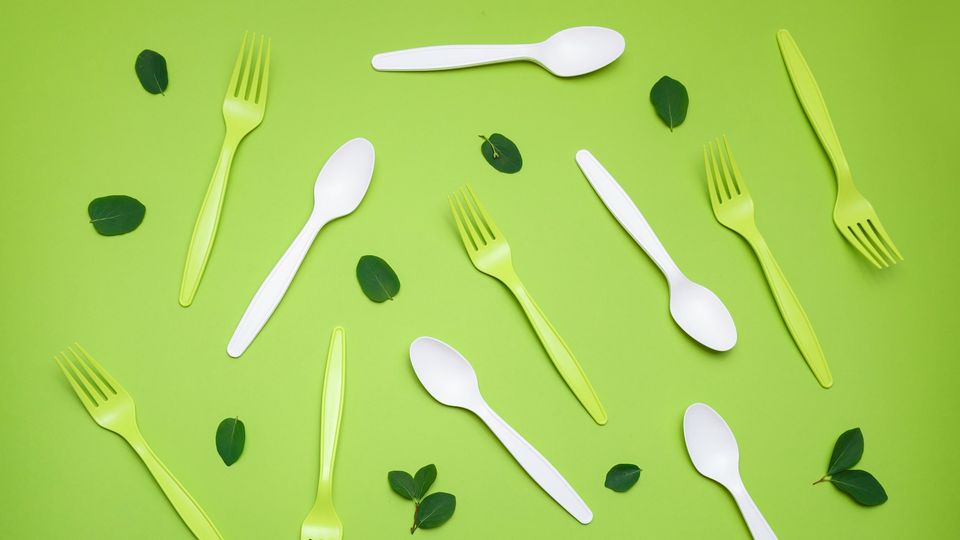Researchers Design a “Pluripotent” Plastic For Multifunctional Use
In a resource-scare environment, temperature-programmable plastic can be the solution to many problems.

Complete the form below to unlock access to ALL audio articles.
In remote environments, engineers are limited to only the materials that they have on hand to fix things. This is especially true for sea and space exploration missions, where there is a real weight-saving motivation to only take minimal supplies along for the ride.
But what if engineers had access to a Swiss army knife-like material, one that could become a stiff plastic tool or a soft rubber band as needed?
This is exactly what researchers at the University of Chicago, alongside collaborators from the Argonne National Laboratory, the U.S. Army Research Laboratory, NASA and the National Institute for Standards and Technology (NIST) have developed.
Just like a pluripotent stem cell can differentiate into many different cell types, their new type of plastic can fine-tune its properties to suit many different applications depending on how it is heated and cooled. Their multifunctional plastic has been described in a new paper published in Science.
A pluripotent plastic
Inspired partly by the pluripotent stem cell and partly by the use of tempering in metallurgy to transform steel into everything from razor-sharp knives to tough steel beams, the team set out to design a kind of pluripotent stem polymer.
The result is a polymer material held together by reversible covalent bonds that can break and re-form dynamically. This allows the large network of constituent polymer chains to rearrange within the material, letting it take on new shapes and properties as it is heated.
Through a process called dynamic reaction-induced phase separation, the researchers found that it is possible to kinetically freeze the network topologies formed at these higher temperatures, effectively “locking in” these new properties. It is this key advance that separates this plastic from more traditional thermoplastics, which can be melted down and re-cast into new shapes but do not come with a corresponding change in material properties.
“We believe, this is the first example of a synthetic material that exhibits pluripotent behavior,” said senior author Stuart Rowan, the Barry L. MacLean Professor for molecular engineering innovation at the University of Chicago. “We believe that it paves the way toward a different way of thinking material design.”
A new approach to plastic design and recycling
By carefully adjusting the temperature the plastic was heated to, the researchers could fine-tune the properties of their pluripotent plastic for different uses. For example, heating the plastic to low temperatures (around 60 °C) resulted in more “dynamic covalent bonds” being formed in the material, creating a very stiff, high-strength plastic once cooled to room temperature. This kind of material could be used to make tools, utensils and other firm objects. But when the plastic was heated to higher temperatures (around 110 °C), the result was a much softer, more extensible material that could be used as an adhesive.
“We were surprised by how many different mechanical properties we could get,” said study author Nicholas Boynton, a graduate student at the University of Chicago Pritzker School of Molecular Engineering. “From this single feedstock material, we can turn it into something that behaves like a hard, high-strength material or something that’s quite flexible, like a rubber band.”
Want more breaking news?
Subscribe to Technology Networks’ daily newsletter, delivering breaking science news straight to your inbox every day.
Subscribe for FREEMost importantly for a multifunctional material, the new plastic can be re-tempered again at different temperatures to access new and different states. Currently, the team’s new plastic can lock in its new properties for up to one month at room temperature. Now, they are investigating how to improve the range of properties that the plastic can be imbued with.
“If you’re going to live on the moon or Mars, you can’t take a bunch of materials with you, and you don’t have Amazon Prime shipping, so it’d be great if you have this one material that you can turn into a bunch of different stuff,” said Boynton.
In addition to being a helpful multi-purpose material for resource-scarce environments, the researchers also hope that their new material could open the door to new approaches for plastic recycling; if a single plastic capable of taking many different forms replaces the many different types of plastic we use today, there would be no need to separate out plastics prior to recycling.
“We want to reframe the way we think about designing materials,” said Rowan. “Instead of designing one material for one application, let’s flip that on its head and see if we can make one material that can be differentiated to be useful for many applications.”
Reference: Boynton NR, Dennis JM, Dolinski ND, et al. Accessing pluripotent materials through tempering of dynamic covalent polymer networks. Science. 2024;383:545-551. doi:10.1126/science.adi5009
This article is a rework of a press release issued by the University of Chicago. Material has been edited for length and content.


